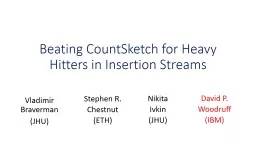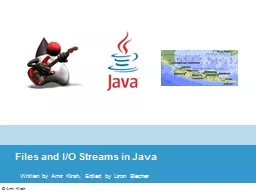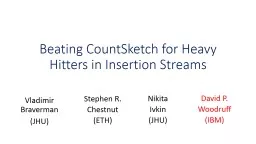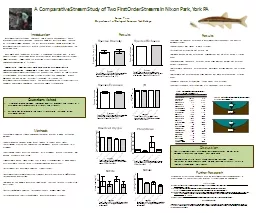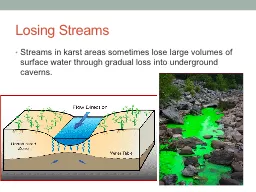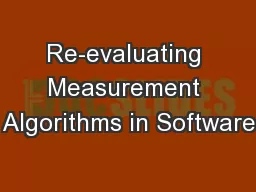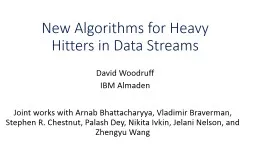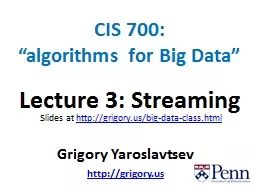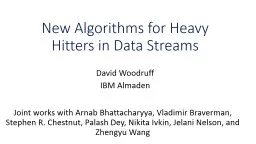PPT-New Algorithms for Heavy Hitters in Data Streams
Author : sherrill-nordquist | Published Date : 2018-03-11
David Woodruff IBM Almaden J oint works with Arnab Bhattacharyya Vladimir Braverman Stephen R Chestnut Palash Dey Nikita Ivkin Jelani Nelson and Zhengyu
Presentation Embed Code
Download Presentation
Download Presentation The PPT/PDF document "New Algorithms for Heavy Hitters in Data..." is the property of its rightful owner. Permission is granted to download and print the materials on this website for personal, non-commercial use only, and to display it on your personal computer provided you do not modify the materials and that you retain all copyright notices contained in the materials. By downloading content from our website, you accept the terms of this agreement.
New Algorithms for Heavy Hitters in Data Streams: Transcript
Download Rules Of Document
"New Algorithms for Heavy Hitters in Data Streams"The content belongs to its owner. You may download and print it for personal use, without modification, and keep all copyright notices. By downloading, you agree to these terms.
Related Documents

